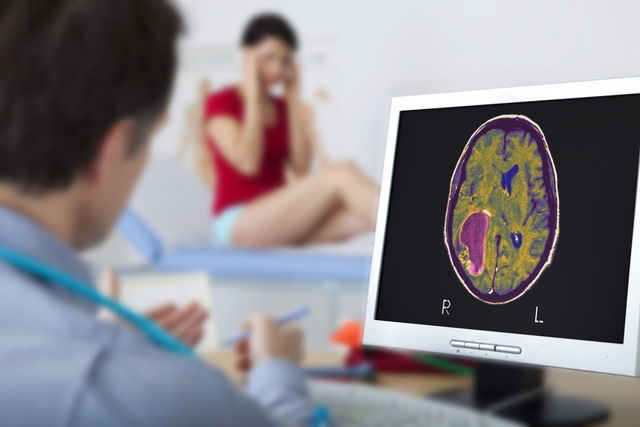Brain tumor symptoms will vary depending on the size of the tumor, its growth rate and where it’s located. This type of cancer can emerge at any age, but is most common in patients over 60 years of age.
Normally, benign brain tumors (like meningiomas or gliomas) grow slowly and do not always require treatment. Sometimes, the risk of complications from surgical removal is far greater than the risk for complications from the tumor itself.
Brain tumors that are malignant contain cancerous cells that multiply rapidly which can spread to toher areas of the brain. These cancerous cells can also metastasize to other areas of the body, like the lungs or brests. Sometimes, symptoms are similar to those of an aneurysm, although the doctor can rule out this condition through imaging tests.

Main symptoms
Brain tumors can present with general symptoms (which occur with most tumors) or with more specific symptoms associated with the area of the brain affected.
1. General symptoms
Many brain tumors can cause the following symptoms:
- Headache
- Blurry vision
- Seizures
- Nausea or vomiting with no apparent reasons
- Loss of balance
- Changes to mood and behavior
- Numbness, tingling or weakness affected a specific area of the body
- Excessive drowsiness
It is important to note that these symptoms can also occur with other health conditions, like migraines, a brain aneurysm, multiple sclerosis or a stroke. Therefore it is important to see a doctor for assessment and testing so that the underlying cause is identified.
2. Specific symptoms based on tumor location
In addition to the general symptoms listed above, a brain tumor can also cause symptoms that are specific to the area where the brain tumor is located:
Symptom intensity depends on the size of the tumor and the cell characteristics (ie. if the tumor cells are malignant or benign). Age and general health status can also affect symptom intensity and progression.
Confirming a diagnosis
If you notice one or more of the above symptoms, you should see a neurologist for more specific diagnostic tests, like an MRI or CT scan. The earlier a brain tumor is identified, the more effective treatment will be.
If a nodule is detected during an imaging test, the doctor can further confirm if it is benign or malignant by ordering a biopsy. A specimen or small piece of the tumor is collected and its cells are evaluated in the lab. This will help to guide the best treatment.
Risk factors
In most bases, brain tumors emerge for no apparent reason. However, there are some factors that can increase the incidence of this type of tumor, such as:
- Being frequently exposed to radiation, which happens with radiation therapy for cancer treatment
- Positive family history of brain tumors, or a genetic syndrome that increases overall risk for tumors
Having cancer in other areas of the body can also lead to the growth of a brain tumor, as cancer can spread to other areas of the body and produce more malignant cells.
